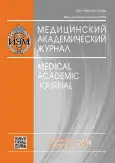FEATURES OF MAST CELL RESPONSE AND VEGF EXPRESSION IN THE SKIN DEPENDING ON THE POWER OF LASER EXPOSURE
- Authors: Kudrina MG1, Golovneva ES1,2, Astakhova LV1, Kravchenko TG1, Ignatieva EN1, Yelovskikh IV2
-
Affiliations:
- Multidisciplinary Center for Laser Medicine, Chelyabinsk
- South Ural State Medical University, Chelyabinsk
- Issue: Vol 19, No 1S (2019)
- Pages: 146-147
- Section: Articles
- Published: 15.12.2019
- URL: https://journals.eco-vector.com/MAJ/article/view/19371
- ID: 19371
Cite item
Abstract
Keywords
Full Text
About the authors
M G Kudrina
Multidisciplinary Center for Laser Medicine, Chelyabinsk
E S Golovneva
Multidisciplinary Center for Laser Medicine, Chelyabinsk; South Ural State Medical University, Chelyabinsk
L V Astakhova
Multidisciplinary Center for Laser Medicine, Chelyabinsk
T G Kravchenko
Multidisciplinary Center for Laser Medicine, Chelyabinsk
E N Ignatieva
Multidisciplinary Center for Laser Medicine, Chelyabinsk
I V Yelovskikh
South Ural State Medical University, Chelyabinsk
References
- Golovneva ES, Popov GK. Expression of vascular endothelial growth factor during neoangiogenesis stimulated by exposure to high-intensity laser radiation. Bulletin of experimental biology and medicine. 2003;136(12):551-553.
Supplementary files







